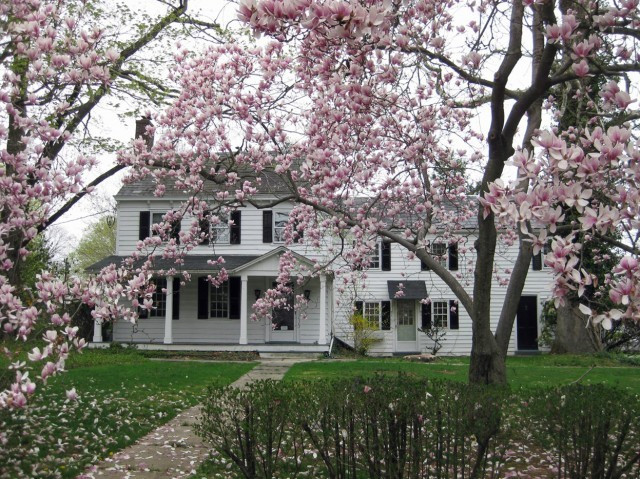In honor of Teacher Appreciation Week, we are sharing this excerpted article by Louise Goss about her lifetime collaboration with Frances Clark. On behalf of The Frances Clark Center thank you to all teachers for sharing the incredible and transformative power of music.

Being invited to look at the changes in keyboard pedagogy over the last 20-30 years is a little like being asked to review my life. Piano Pedagogy and I grew up together, from 1945 until now.
I was born in Kalamazoo, Michigan, a small, vibrant city where music and the arts flourished. Except for very poor piano lessons, I had wonderful musical experiences — church and school choirs, orchestra and band, clarinet lessons and excellent vocal coaching, the local symphony and Community Concerts.
The early days with Frances Clark
By the time I got to college, I knew my future lay in music, and I also realized this meant becoming a better pianist. By great good fortune, my college piano teacher was Frances Clark, who had just joined the faculty of Kalamazoo College. “K” college was a liberal arts school, with a minimal music department. Adding Frances to their faculty was a bold step for a small college, but how bold they had no idea!
By my sophomore year, Frances had persuaded the administration to let her start a program in “piano teacher training” so that six of us undergraduate piano students could begin our training as teachers. Frances already had considerable experience in teaching teachers. She had developed a reputation as a teacher of exceptionally successful young students and was widely regarded for her imaginative ideas on teaching methods and materials. Other teachers began to come to her, first singly and then in groups, for what today we would call “piano pedagogy.” So, in a new college position, it was natural for her to think about how to help piano majors learn the basics of piano teaching.

Frances’ first collegiate four-year piano pedagogy curriculum
Frances devised a curriculum for us: private lessons on our own repertoire, weekly lectures on the teaching/learning process and how it applied to piano, and demonstrations of her own extraordinary teaching of beginners and intermediate students in both private and group lessons. We studied the popular beginning piano methods of the day, and totally reorganized them under her guidance. We also began to work on supplementary study material to “fill in the holes.”
And so it was, that in my sophomore year, I was already embarked on two aspects of pedagogy which were to dominate the rest of my professional life: a study of the teaching/learning process and how to apply it most effectively to piano teaching, plus an attempt to create better, more comprehensive, more creative teaching materials. By our junior year, each of us was assigned one or two beginners in a study program called “the two-and-one plan.” Frances taught the first lesson while we observed and took notes. We taught the next two lessons, she taught the fourth, etc. In retrospect, I find it fascinating that she never watched us teach. Apparently she learned all she needed to know about our teaching by teaching our students. Each of these lessons was followed by a conference with us on what we were doing right, what we might improve, and how to improve it.

In our senior year, we taught the private lessons from her beginner’s classes, and began to experiment with intermediate level students, still on the two-and-one plan. By the time I graduated (1948), “K” College already had in place what was probably the first 4-year program in piano pedagogy in a college or university anywhere. This little liberal arts college, with a great reputation in English and science, unwittingly found itself at the forefront of an important new movement in the training of piano teachers.
That summer, Frances invited me to help her give her first “Workshop for Piano Teachers.” Three days long, it included lectures, teaching demonstrations, discussion periods, and student recitals. About 35 teachers attended the first of what were to become annual summer study courses, extending over the next 50 years and across the length and breadth of the country.
A time to begin
Frances also asked me to help her put together the supplementary reading materials we had been developing in our pedagogy courses. She took them to the Clayton F. Summy Publishing Company (later to become Summy-Birchard) in Chicago, where they were immediately accepted and published as The ABC Papers. This simple little book of intervallic reading drills was without precedent and became an instant success.
I was at the University of Michigan for doctoral study in musicology when Frances received an intriguing invitation. Summy asked her to study their keyboard catalogue and arrange it in an order that made pedagogical sense. She countered that if they wanted a real “method,” she would need to start from scratch and create one that followed the learning principles and curriculum guidelines she had been developing over the years. Hearing I was to be included in this project, I joyously abandoned the doctorate, went back to Kalamazoo, and began an adventure that lasts even today.
We hope you enjoyed this excerpted article by Louise Goss. To learn more about her collaboration with Frances Clark and read the full article, click here.
MORE ON THE NEW SCHOOL FOR MUSIC STUDY
- PIANO MAGAZINE: A Philosophy of Piano Pedagogy by Frances Clark
- VIDEO: Conversations, Part 1 by Frances Clark
- VIDEO: Perspectives on Teaching by Frances Clark
- COURSES: Foundational Piano Pedagogy (Self-Guided)
- PIANO MAGAZINE: Spring 2023: Questions and Answers by Charlene Ryan